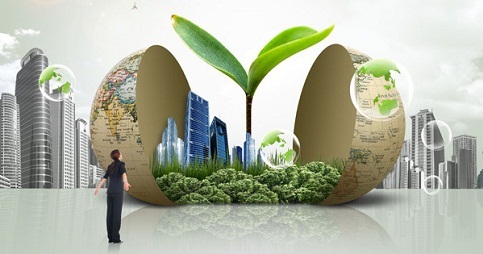Global green building materials market
Introduction
Though cost concerns, market barriers and lack of government policies encouraging green construction are some factors which hinder the growth of green building materials, continuous innovation and a rise in the growth of the building and construction sector provides great potential for market expansion.
Green building materials promote the conservation of non-renewable resources and reduce environmental impact associated with fabrication, processing, installation, transportation, disposal, and recycling.
They are employed in the construction industry to address environment challenges including climate change, natural resource depletion, atmospheric pollution, contamination of fresh water resources, and loss of biodiversity.
The emission reduction potential of green building materials, high asset value of green buildings, growth in public awareness, and an increase in client and market demand are the major factors that drive the green building materials market across the globe. Increasing concerns regarding energy prices, accelerating climate change, negative health impacts associated with building materials, and stormwater runoff polluting rivers and lakes have reinforced the need for green building construction in the residential sector.
DGNB, LEED, BREEAM, HQE, and EnergyStar are some of the certification systems that evaluate performance of the green buildings.
New low-rise and high residential buildings, retrofits of existing buildings, and new industrial buildings are the major areas where growth of green building materials is expected.
Exterior products accounted for more than one-third of the market in terms of revenue in 2015. Employment of green building exterior products in construction industry offers energy efficiency, durability, low maintenance, and operation cost and waste reduction over traditional construction techniques. The residential buildings segment holds the largest share by application in terms of revenue and is expected to grow at a CAGR of 11.2%.
Porter’s Five Forces Analysis
Green building employs pollution-free production technology and low-energy manufacturing processes, which helps control expenses and environmental hazards. The demand for raw materials used in green building materials market has increased considerably over the years, whereas the sources from which these raw materials are derived are limited in nature.
Market Dynamics:
Drivers:
Emission Reduction Potential of Green Building Materials
The building and construction sector accounts for more than two-thirds of total greenhouse gas emissions across the globe. Thus, there is a great potential for reducing greenhouse emissions by enhancing the energy efficiency of buildings and communities. Reductions in greenhouse emissions can be accomplished by the construction of new green buildings with low energy consumption and retrofitting of existing buildings.
Restraints:
Cost Concerns and Market Barriers
A wide variety of cost concerns and market barriers exist in the green building construction market including the “split incentive” barrier, i.e., owners of the houses don’t make effective investments in their properties as the occupants reap benefits from these investments and not the owners. A total of 40% of commercial buildings and 32% of households are rented or leased.
Top Winning Strategies:
To withstand competition, the key players in the global green construction materials industry have adopted different key business strategies, such as acquisitions, expansions, product launch, and collaboration.
Key findings of the Green Building Materials Market:
- Asia-Pacific is expected to continue to lead the market during the forecast period followed by Europe.
- Solar products market revenue is projected to grow with a high CAGR of 13.5% during the forecast period.
- Roofing is the fastest growing segment in green building exterior products registering a CAGR of 12.2% during the forecast period.
- Brazil accounts for three-fifths share in LAMEA green building materials market in 2015.
- India grows at a faster rate in Asia-Pacific green building materials market, registering a CAGR of 12.7% from 2016 to 2022.
- France accounts for 11.1% share in Europe green building materials market in 2015.
Related articles on Designing Buildings Wiki
Featured articles and news
Gregor Harvie argues that AI is state-sanctioned theft of IP.
Many resources for visitors aswell as new features for members.
Using technology to empower communities
The Community data platform; capturing the DNA of a place and fostering participation, for better design.
Heat pump and wind turbine sound calculations for PDRs
MCS publish updated sound calculation standards for permitted development installations.
Homes England creates largest housing-led site in the North
Successful, 34 hectare land acquisition with the residential allocation now completed.
Scottish apprenticeship training proposals
General support although better accountability and transparency is sought.
The history of building regulations
A story of belated action in response to crisis.
Moisture, fire safety and emerging trends in living walls
How wet is your wall?
Current policy explained and newly published consultation by the UK and Welsh Governments.
British architecture 1919–39. Book review.
Conservation of listed prefabs in Moseley.
Energy industry calls for urgent reform.
Heritage staff wellbeing at work survey.
A five minute introduction.
50th Golden anniversary ECA Edmundson apprentice award
Showcasing the very best electrotechnical and engineering services for half a century.
Welsh government consults on HRBs and reg changes
Seeking feedback on a new regulatory regime and a broad range of issues.
CIOB Client Guide (2nd edition) March 2025
Free download covering statutory dutyholder roles under the Building Safety Act and much more.

























